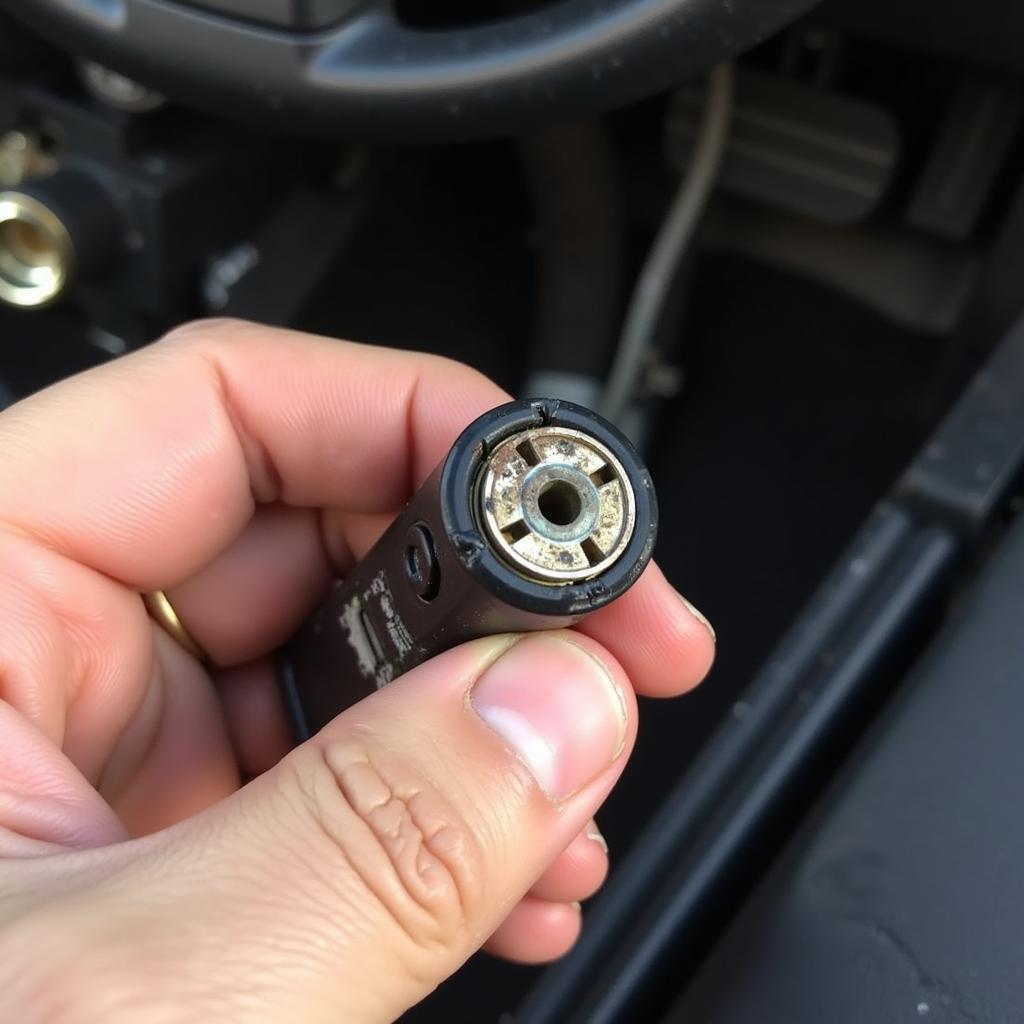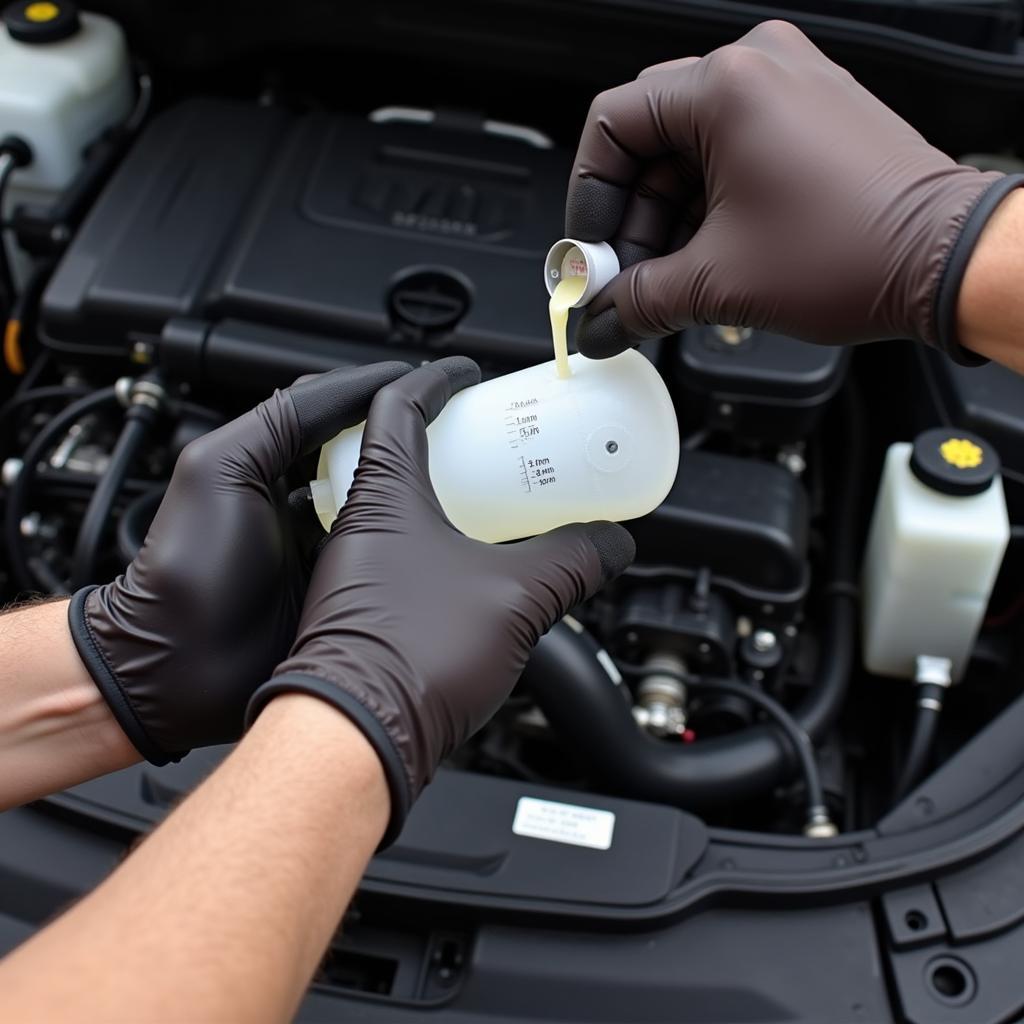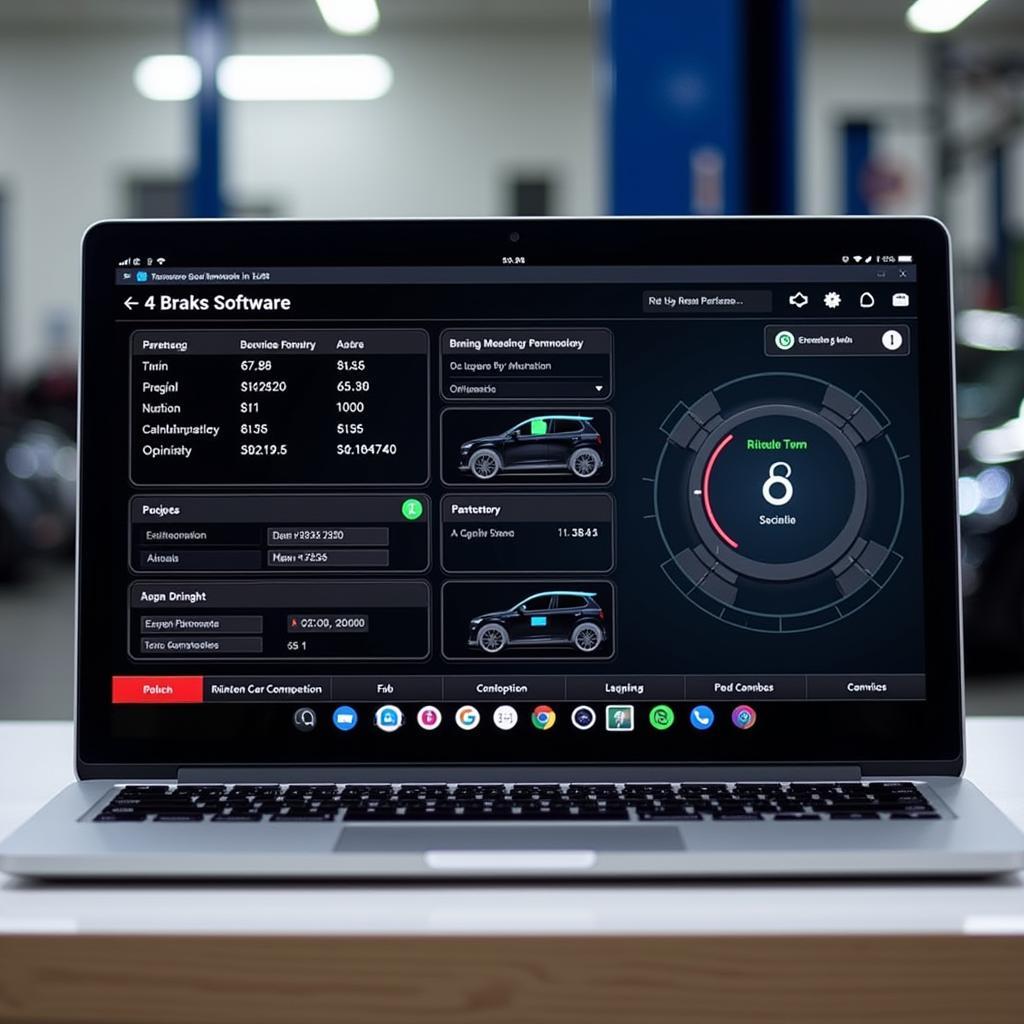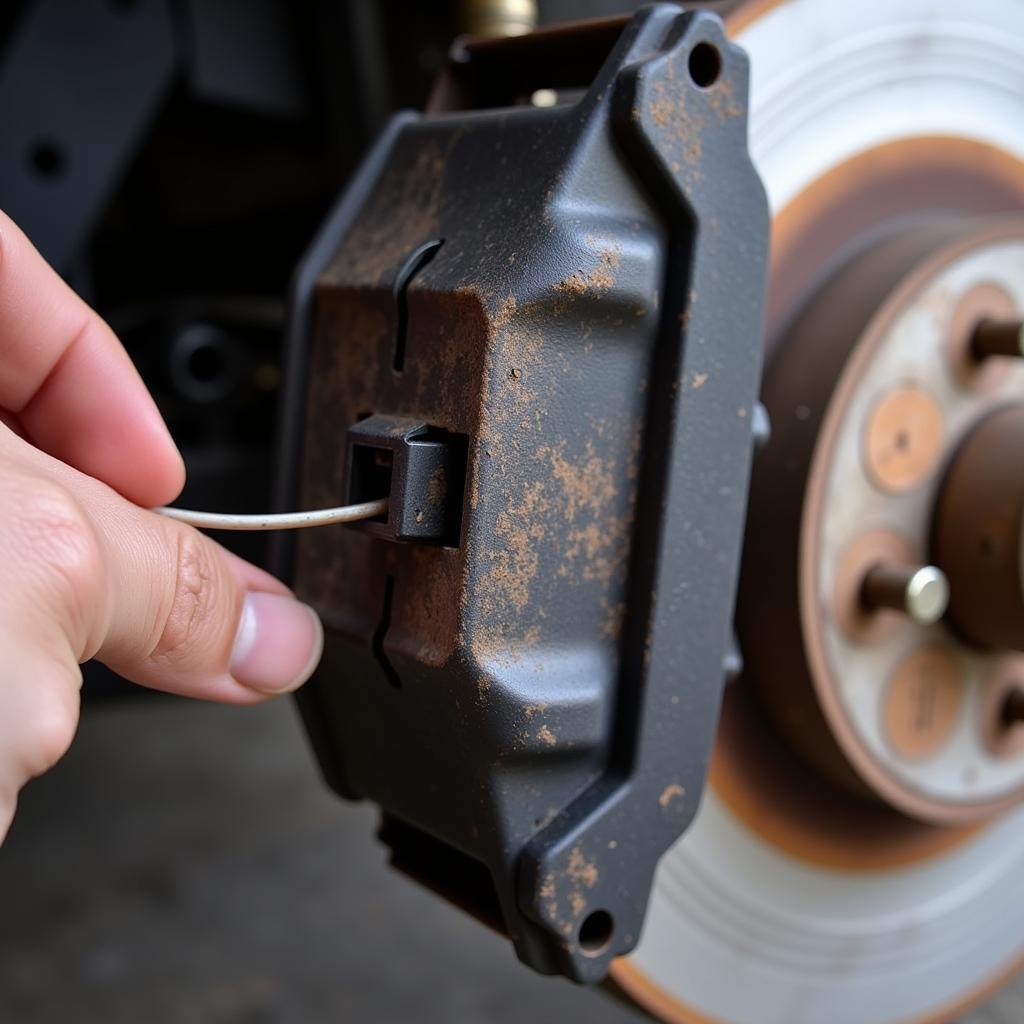The dreaded “set brakes” warning label illuminating on your dashboard can be a cause for concern for any driver. While it may seem straightforward, this warning can point to various issues, from a simple parking brake oversight to more complex problems within your braking system. As an expert in automotive electrical engineering, specializing in remote diagnostics, programming, and software installation, I’m here to demystify the “set brakes” warning and guide you toward a solution.
This article will delve into the common reasons behind this warning light, provide practical tips for troubleshooting, and discuss when it’s crucial to seek professional help.
What Triggers the “Set Brakes” Warning Label?
The “set brakes” warning primarily serves as a reminder that your parking brake, also known as an emergency brake, is engaged. However, this warning light can also indicate problems beyond a forgetful moment. Let’s explore some common culprits:
-
Engaged Parking Brake: The most frequent cause is simply forgetting to disengage the parking brake before driving. Always double-check your parking brake before hitting the road.
-
Faulty Parking Brake Switch: A malfunctioning parking brake switch can send a false signal to your car’s computer, triggering the warning light even when the brake is disengaged.
-
Low Brake Fluid Level: Low brake fluid is a serious issue as it can significantly reduce your braking power. If the brake fluid level drops below a certain point, the “set brakes” warning may illuminate alongside the brake warning light.
-
Worn Brake Pads: Worn brake pads not only compromise your safety but can also trigger various warning lights, including the “set brakes” warning.
-
Electrical Issues: Wiring problems, a faulty instrument cluster, or other electrical glitches within the braking system can cause the “set brakes” warning to illuminate erratically.
 Faulty Brake Switch
Faulty Brake Switch
Troubleshooting the “Set Brakes” Warning
Before rushing to a mechanic, here are a few troubleshooting steps you can take:
-
Check Your Parking Brake: Ensure your parking brake is fully disengaged. Sometimes, it might not release entirely, even if you think it has.
-
Inspect Brake Fluid: Locate your brake fluid reservoir and check the fluid level. If it’s below the minimum mark, add the recommended brake fluid (refer to your owner’s manual). However, if the fluid level is consistently low, it indicates a leak that needs immediate professional attention.
-
Visual Inspection of Brake Pads: While not always easy to inspect without removing the tires, you can try to get a visual of your brake pads. Look for significant wear or if they appear thin.
 Checking Brake Fluid Level
Checking Brake Fluid Level
When to Seek Professional Help
While the troubleshooting tips above can address some common causes, certain situations warrant the expertise of a qualified mechanic. If you experience any of the following, it’s crucial to seek professional help:
-
The warning persists after checking the parking brake and brake fluid.
-
You notice a grinding noise when applying brakes.
-
Your car pulls to one side when braking.
-
You experience a soft or spongy brake pedal.
-
Your brake warning light illuminates along with the “set brakes” warning.
Remote Diagnostics and Software Solutions
In today’s technologically advanced world, remote diagnostics and software solutions play a vital role in automotive repair. Many modern vehicles can be diagnosed remotely by connecting to specialized software, which allows technicians to identify the root cause of the problem efficiently.
 Remote Car Diagnostics
Remote Car Diagnostics
For instance, in some cases, a simple software update or reset might be all that’s needed to rectify the “set brakes” warning, especially if the issue stems from a faulty sensor or a communication error within the car’s electronic control units.
Conclusion
The “set brakes” warning label shouldn’t be ignored. While it might point to something as simple as an engaged parking brake, it could also be a red flag for a more serious underlying issue with your braking system. By understanding the potential causes and performing some basic troubleshooting, you can often identify the problem. However, it’s crucial to remember that your safety is paramount. When in doubt, always seek professional assistance from a qualified mechanic to diagnose and repair any brake-related concerns.

